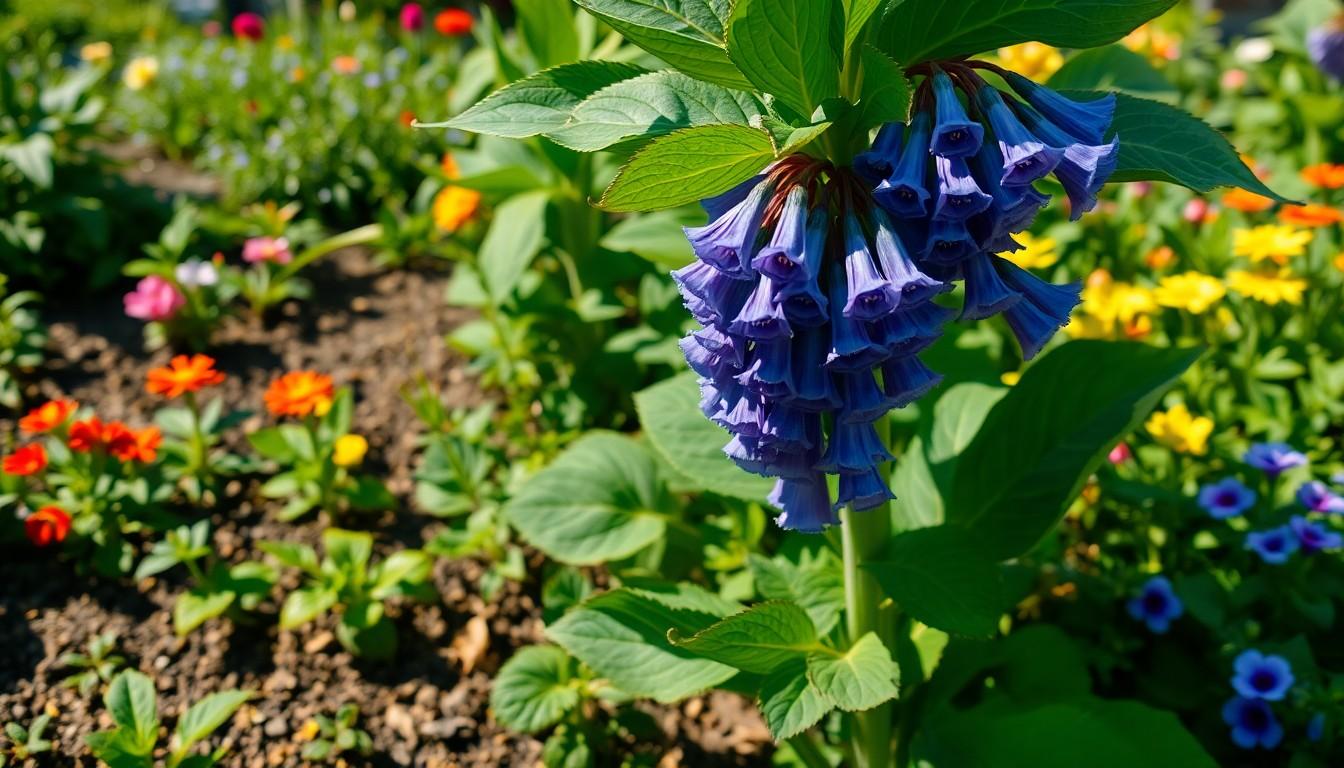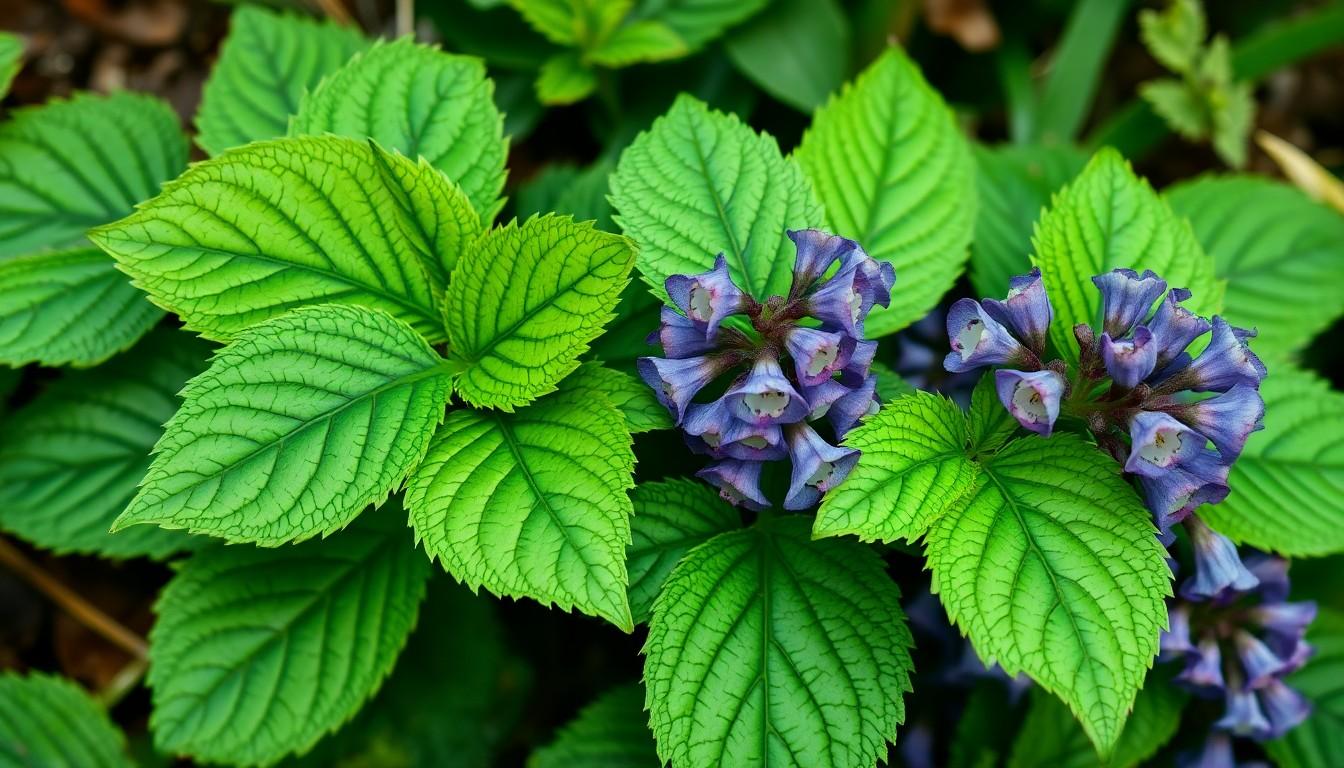The Best Fluffy Pancakes recipe you will fall in love with. Full of tips and tricks to help you make the best pancakes.

Comfrey Plant Identification: How to Spot This Gardening Gem Easily
The comfrey plant isn’t just another green buddy in your garden; it’s a powerhouse of potential. With its broad leaves and bell-shaped flowers, this perennial can easily charm its way into any plant lover’s heart. But don’t let its good looks fool you—identifying comfrey can be a bit tricky, especially with its lookalikes trying to steal the spotlight.
Comfrey Plant Overview
Comfrey features broad, hairy leaves that grow up to 12 inches long. Bell-shaped flowers typically bloom in clusters, showcasing hues ranging from purple to blue and white. The plant can reach heights of 3 to 4 feet, thriving in various environments.
Commonly found in gardens and along roadsides, comfrey prefers moist, well-drained soil. It often grows in partial shade but tolerates full sunlight. Its ability to spread quickly makes it a popular choice among gardeners, although this characteristic can complicate control.
Identifying comfrey requires attention to detail, as it closely resembles other plants. The leaves of comfrey are distinctive; they appear wrinkled and coarse. Additionally, the stem shows a characteristic angular shape. Notably, comfrey’s flowers hang downwards, differentiating them from vertical flower spikes of similar plants, such as borage.
Cultivating awareness of comfrey’s unique traits proves essential for accurate identification. A gardener should take note of the plant’s habitat, growth pattern, and time of bloom. By focusing on these aspects, individuals can confidently identify and utilize comfrey in their gardening endeavors.
Key Characteristics of Comfrey

Identifying comfrey involves observing specific characteristics. Knowledge of these traits ensures confident recognition.
Leaf Identification
Leaves serve as a primary way to identify comfrey. Broad, wrinkled leaves display a coarse texture. Typically, leaves grow 6 to 12 inches long. Their prominent veins create a distinct appearance. Sites often show a dark green color, enhancing the visual appeal. Sometimes, leaves can appear hairy, adding to their uniqueness. Assessing these features aids in distinguishing comfrey from other plants.
Flower Identification
Flowers offer additional identification markers for comfrey. Bell-shaped blossoms often bloom in clusters, showcasing colors like purple, blue, or white. Each flower typically measures about 1 inch long. Downward-facing flowers hang from sturdy stems. The flowering season generally occurs from late spring to early summer. Recognizing these traits helps differentiate comfrey from similar species, such as borage.
Stem and Root Features
Stems and roots provide further identifying evidence for comfrey. Angular stems exhibit a thick, sturdy structure. Heights generally reach between 3 to 4 feet, showcasing its robust growth. Underground, a thick taproot aids in nutrient uptake. This root structure also contributes to the plant’s ability to spread quickly. Focusing on these physical traits enhances accurate identification, proving essential for effective gardening practices.
Habitat and Distribution
Comfrey thrives in specific environments that support its growth. This plant favors moist, well-drained soils, often found near water sources.
Natural Habitats
Wetlands and stream banks serve as primary natural habitats for comfrey. It also flourishes in disturbed areas, such as roadways and field edges. Rich organic matter and partial shade enhance its growth potential. Protection from extreme heat or cold increases its resilience. This flexibility in habitat makes comfrey an adaptable species.
Common Locations
Comfrey commonly appears in gardens and landscapes across temperate regions. It often grows alongside perennials and other flowering plants. Farmers often cultivate it in herb gardens for its medicinal properties. Parks and community gardens frequently showcase comfrey as a decorative element. Urban areas also see its presence due to its hardiness and ornamental appeal.
Uses of Comfrey
Comfrey serves multiple purposes in various fields, particularly in medicine and gardening.
Medicinal Uses
Comfrey possesses notable medicinal properties due to its high allantoin content, which promotes cell regeneration. Traditionally, many used comfrey to treat bruises, sprains, and wounds. With its anti-inflammatory qualities, it alleviates pain associated with muscle strains and arthritis. Herbalists sometimes utilize comfrey in topical ointments and creams, allowing for targeted relief. Some studies indicate potential benefits in promoting healing of fractured bones. Caution remains necessary, as internal consumption may pose health risks due to toxic compounds in certain formulations. Therefore, proper knowledge and usage guidelines ensure safe application.
Gardening and Landscaping
Comfrey plays a significant role in gardening and landscaping, often recognized for its ability to improve soil health. This plant acts as a natural fertilizer, enriching soil with nitrogen and other essential nutrients. Additionally, its deep taproot accesses minerals from lower soil layers, making them available to neighboring plants. Many gardeners use comfrey as a companion plant, enhancing growth in nearby flowering plants and vegetables. Its lush foliage attracts pollinators, contributing to overall garden biodiversity. Comfrey’s rapid growth and spreading ability, while beneficial, require monitoring to prevent overgrowth. Finally, its ornamental clusters of flowers can enhance visual interest in garden designs.
Conclusion
Identifying the comfrey plant is crucial for those looking to harness its benefits in gardening and herbal medicine. With its distinctive features like broad wrinkled leaves and downward-facing flowers, recognizing comfrey becomes easier once one knows what to look for. Its adaptability to various environments highlights its resilience and versatility, making it a valuable addition to any garden.
Gardeners should remain vigilant about its rapid growth to maintain control while enjoying its numerous advantages. Whether used for soil enrichment or medicinal purposes, comfrey’s unique characteristics and benefits make it a plant worth understanding and cultivating.




